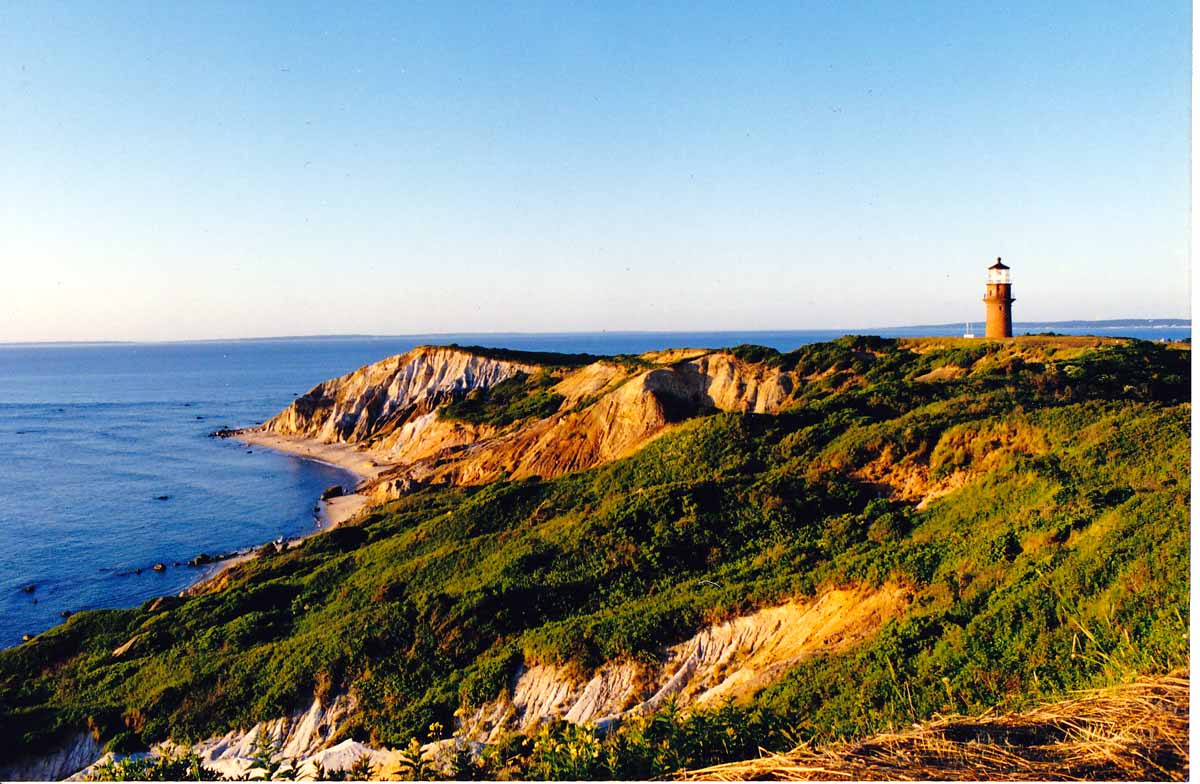 |
|||||
| The Lighthouse News and History Magazine | |||||
|
Gay Head Lighthouse Added to Doomsday List  The historic Gay Head Lighthouse, which is located on the western end of Martha's Vineyard, and is now threatened by erosion, has been added to the Lighthouse Digest Doomsday List of Endangered Lighthouses. The announcement was made in the January/February edition of Lighthouse Digest, which also featured a colorized historic image of the lighthouse on the cover. Timothy Harrison, editor of Lighthouse Digest, which is a lighthouse news and history magazine, said that Gay Head Lighthouse is a vital monument to our nation's maritime heritage that must be moved as soon as possible so that it can be saved for future generations. "If the lighthouse is allowed to be lost, it would be a travesty," said Harrison. "It was an outright disgrace when the federal government demolished the historic keeper's house after the lighthouse was automated in the mid-1950s and to now lose the lighthouse tower would be an even greater travesty. Gay Head Lighthouse is of national historical importance as well as significant to the culture of Martha's Vineyard." Lighthouse Digest created the Doomsday List of Endangered Lighthouses in 1993 in an effort to draw public attention to lighthouses that were in danger of being lost forever. A number of lighthouses that were once on the Lighthouse Digest Doomsday List have been saved. Among those, to name a few, are the Cape Hatteras Lighthouse in North Carolina, Michigan's Crisp Point Lighthouse and Grand Island East Channel Lighthouse, Avery Point Lighthouse in Connecticut, Sankaty Lighthouse on Nantucket, Cape Cod's Highland Light and Nauset Light, Maine's Little River Lighthouse and Prospect Harbor Lighthouse, and Southeast Lighthouse on Block Island, Rhode Island. There are currently forty-one United States lighthouses on the Lighthouse Digest Doomsday List of Endangered Lighthouses. Harrison says, "Sadly, some of those lighthouses will not be saved, generally because of their remote location. However, other lighthouses on the list have a very good prognosis of being saved, mainly because of public attention." Harrison said, "A lighthouse can only be saved when people are made aware of the problem and then get involved." He went on to say, "It will take a monumental amount of money to move Gay Head Lighthouse, but previous moves of lighthouses back from an eroding shoreline have all been successful. However, it will take tenacity, because even after the lighthouse is moved, it will be a long and tedious task to raise more money to restore and maintain the structure, but in the end the reward is well worth it." Harrison said that Gay Head Lighthouse is not the only lighthouse threatened by erosion. Florida's Cape San Blas Lighthouse is also in imminent danger. Although the move of Cape San Blas Lighthouse has been approved by the federal government, funds still need to be raised to move the structure. Other lighthouses that are threatened by erosion, but will need to be saved where they stand, are the Sand Island Lighthouse in Alabama and the New Point Comfort Lighthouse in Virginia. Harrison said this is not the first time that the Gay Head Lighthouse Station was threatened by erosion. In 1844 the first Gay Head Lighthouse had to be moved back 75 feet from the eroding bluff. The current Gay Head Lighthouse tower was built in 1856. In 1902 the old keeper's house was demolished and replaced by a new house, which stood until it was demolished in the mid-1950s after the lighthouse was automated During its time as a family staffed lighthouse, it was a popular tourist destination and literally tens of thousands of people were given tours of the tower by its keepers. It was a popular spot for picnics and the picturesque light station appeared on countless post cards. Much of that came to a halt when the keepers were removed and the house was demolished. Even though a modern optic was installed in the lantern, the tower, neglected by the Coast Guard, soon fell into disrepair and was subject to vandalism. In 1986 the Vineyard Environmental Research Institute (VERI), (now known as World Waterway) under the leadership of William Waterway Marks, obtained a lease from the Coast Guard to care for the lighthouse. Through the efforts of volunteers and donors, the group created a park at the site and, for the first time since the 1950s, in 1988 they opened the lighthouse tower to the public. In 1994 the lease was transferred to the Dukes County Historical Society, which is now known as the Martha's Vineyard Museum and is the organization that now hopes to raise the money to move the lighthouse to a safe location and then fully restore it. Harrison says that he believes that, by adding the Gay Head Lighthouse to the Lighthouse Digest Doomsday List of Endangered Lighthouses, it will not only help draw public attention to the lighthouse but will stress to government officials the urgency in transferring ownership of the lighthouse to the museum so that it can eventually move it. "Time is of the essence. Every day that passes, is another day that the lighthouse comes closer to being lost forever." To learn more about Lighthouse Digest and its Doomsday List of Endangered Lighthouses, or to subscribe to the magazine, which has subscription based world-wide circulation and is not available in stores, you can visit their web site at www.LighthouseDigest.com or contact them at Lighthouse Digest, P.O. Box 250, East Machias, ME 04630. You can also call them at 207-259-2121.
If you are not a subscriber, please subscribe today. Click here. |

